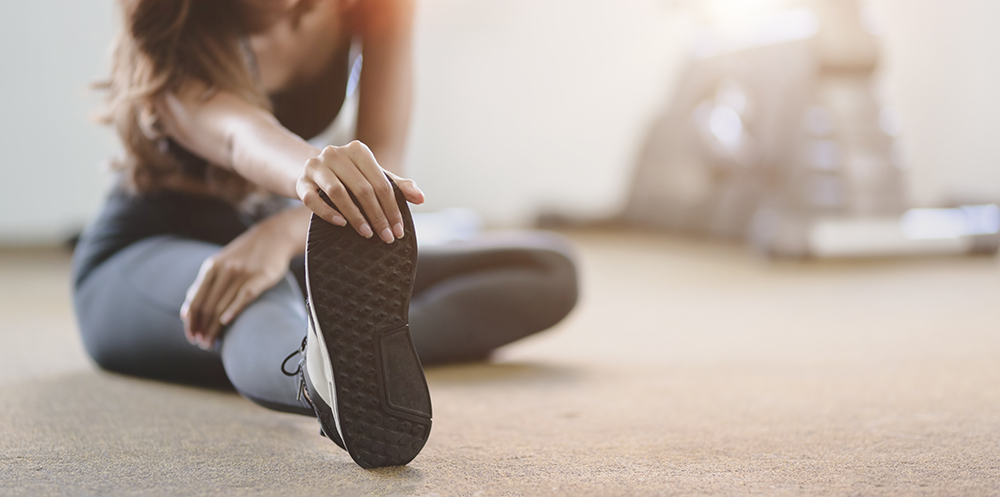Using Exercise As Part of Your Arsenal For Recovery
Physical activity is the quintessential tool for managing mental health and substance use disorders. Exercise improves physical well-being while promoting mental fitness. Exercise creates much-needed structure, fostering a sense of accomplishment. It bridges your body to your mind, naturally establishing a regimen of self-care that we would all benefit from accessing.
Physical activity in all its forms is most beneficial through the discipline of consistency. It is a great teacher for life itself. Take one step at a time, don’t focus on the finish line, and most importantly, schedule it into your daily life. It doesn’t need to be daunting. Physical activity can range from a simple walk or gardening to aerobic exercise, weight lifting, or playing sports. Starting “small” is the key to success. Once a routine is established, your body will naturally tell you it wants more.
Types of Physical Activity and Their Benefits
1) Stretching Exercises
Stretching improves muscle elasticity as the application of tensile force is used to lengthen muscles and tendons. Stretching makes you more flexible over time, safeguards against injuries, relaxes the muscles and enhances physical performance.
Yoga elicits thoughts of calm and serenity. It activates the mind with its meditative qualities while stretching muscles and strengthening balance. Stretching through a yoga practice elicits better flexibility and range of motion, prevents imbalances that can lead to injury, relaxes muscles and aids in dissipating lactic acid while exercising.
A quick cardiovascular warm-up routine is recommended before any stretching routine so that your body produces synovial fluid, which is the mechanism for joint lubrication.

2) Aerobic Exercises
Aerobic exercises also quiet your mind and have their own meditative qualities while tiring your body, and creating a more relaxed state long after you are done. This kind of exercise helps maintain healthy body weight, manages any chronic conditions, improves lung function, and decreases resting heart rates. Aerobic exercises can be separated into two main categories:
Low-Impact Aerobic Exercises
One foot is always in contact with the ground. This type of exercise is great for those that have lived a more sedentary lifestyle as one foot is always in contact with the ground, putting less strain on the musculoskeletal system.
Walking, an exercise that can be performed anywhere at any time is the perfect introduction to physical activity. It is the easiest thing to do with the most reward. Even a 10-minute walk, if incorporated into a routine, will have tremendous benefits.
Swimming is a fantastic exercise. Due to one’s buoyancy in water, there is no pressure placed on your joints. Also, the resistance in your movement when in water aids in strengthening muscles. This is the reason many people rehabilitating from injuries are encouraged to swim.
High-Impact Aerobic Exercises
During high-impact aerobic exercises, there is more direct force placed on the body. Unlike low-impact exercises, both feet come off the ground. The chances of injury are higher but you burn more calories.
Running is something you can do anywhere, whether you live in the city or in the country. You can run on any surface and do not require any equipment, except a decent pair of running shoes. There is no barrier to entry.
Dancing is a mood booster, physical activity combined with music is fun and for some, feels less like exercise than other forms of aerobic activity.

3) Strength Training
Resistance is used to build strength through a muscular contraction in this form of exercise. The gradual increase in your muscle’s learned ability to resist force is where muscular strength is derived. Stamina is increased so you will be slower to fatigue. Strength training also helps to increase bone density and decrease body fat.
Body weight exercises use one’s own body weight as resistance. This includes push-ups, chin-ups, squats, lunges, crunches, etc. This is perfect for someone who doesn’t want to buy expensive equipment in order to gain strength.
Lifting weights, whether it be free weights or using machines, can accelerate muscle growth due to your ability to adjust the amount of weight you are using.
Exercise, in any of its forms, can be practiced inside or outside. If it is done outdoors, you reap the benefits of the healing properties that being out in nature provides. Spending time outdoors means connecting to something greater than yourself. For some, it is considered a spiritual practice.

The Science Behind Physical Activity
Exercise improves blood flow to the brain. It feeds the growth of new blood vessels and new brain cells. Studies have shown that exercise not only affects the physical aspects of health but the mental and even cellular levels. There is a protein called BDNF, short for brain-derived neurotrophic factor, that triggers the growth of neuron cells and protects brain cells from degeneration.
Studies have shown that regular exercise reduces weight, lowers blood pressure, prevents diabetes, improves cholesterol levels, increases muscle strength, improves sleep quality, improves mood, and even sharpens the mind.
Mental Health and Exercise
It has been proven that aerobic exercises help reduce anxiety and depression by improving self-esteem and cognitive function. The boost in your overall mood is thought to be induced by the increased blood circulation to the brain and by influences that occur on the hypothalamic-pituitary-adrenal (HPA) axis. This is believed to affect the physiologic reactivity to stress. The communication of the HPA axis with brain regions includes the limbic system (motivation and mood), the amygdala (fear generated when responding to stress), and the hippocampus (memory formation).

Maintaining Sobriety with Exercise
Although arguable if exercise alone can help maintain sobriety, it is without a doubt an integral piece in the long-term sustainability of protective factors when combined with proven treatment. The mental health implications for those with substance use disorders, or otherwise, are largely offset by the consistent routine of physical activity.
The triggers that often accompany relapse are stress, boredom, and low self-worth. These factors can be managed effectively with a solid exercise routine.
Starting is always the hardest part for both exercise and recovery. Incorporating a consistent exercise regimen into your recovery plan is essential. It is a great teaching tool that can mirror your recovery. Actively doing something that you may not “want” to do, creating simple goals that you feel proud of accomplishing, and reaping the rewards that eventually follow.
References:
https://www.ncbi.nlm.nih.gov/pmc/articles/PMC1470658/
https://www.health.harvard.edu/blog/can-exercise-help-conquer-addiction-2018122615641




